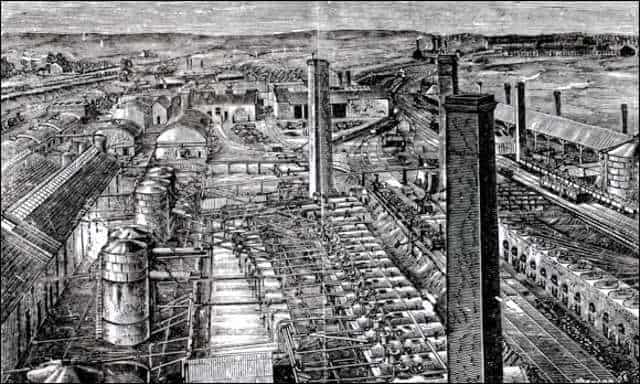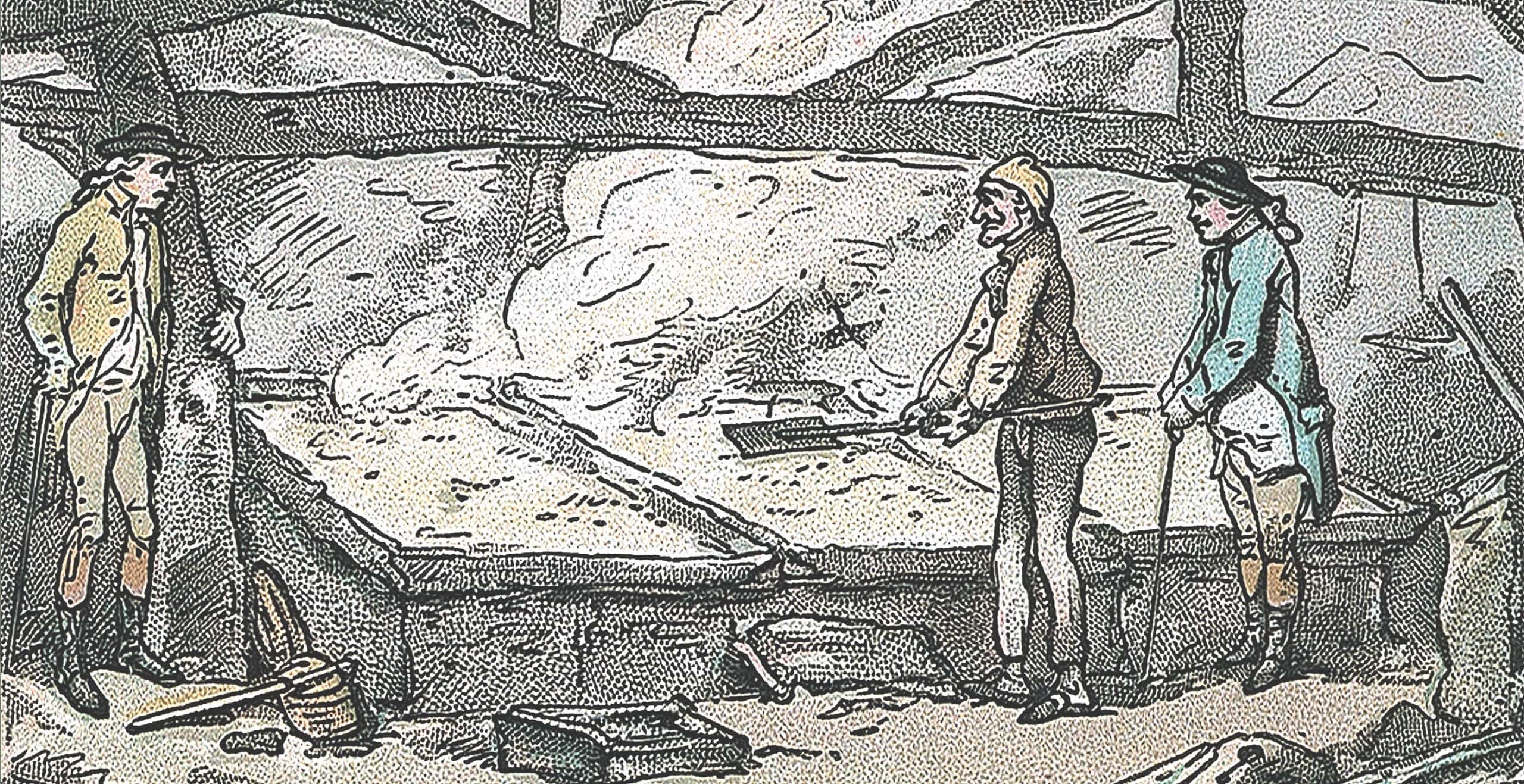Scotland is not normally synonymous with oil production. In fact, Scotland may be the last country in the world that you would consider when thinking of oil refineries, instead imagining places such as Saudi Arabia, America and even Russia. And yet there was a time (albeit a very short time) when Scotland was the largest producer of refined oil in the entire world! Unbelievably it even boasted the world’s very first commercial oil refinery. This was all because of one man – James Young.

Although you would be forgiven for never having heard his name, this man was responsible for a chemical revolution in the late 19th century. Young was arguably the world’s first chemical engineer, although at the time that term was not used and he was simply referred to as a chemist. He was responsible for creating the very first oil refinery in the world, which was, even more unbelievably, located in Bathgate, West Lothian.
His work in oil refinery was also so impressive and productive, and his products so prolific, that he became known as ‘Paraffin Young’. Although arguably his greatest, this was by far from being his only achievement: he was made a Fellow of the Royal Society of Edinburgh in 1861 and then the Royal Society in 1873; he was a dear friend of David Livingstone, he received an honorary degree from St. Andrews University in 1879 and he even invented a more efficient way of rust-proofing ships! So, who was this man who did so much and yet is so little known?
James Young was born, with neither pomp nor ceremony, to a cabinet maker in Glasgow on 13th July 1811. When James was old enough, he became his father’s apprentice. This proved an insufficient challenge for Young, who attended night school and then accepted a place at Anderson’s College in Glasgow to study chemistry. This decision would somehow lead to Young becoming the father of the petrochemical industry little more than a decade later.
His major discovery occurred in 1848, while working in the mining industry. Young noticed that oil was leaking from the ceiling of a coal mine. He deduced from this that there must be a way of intentionally extracting oil from coal if you heated it, and it turns out, he was right. Young patented this particular method in 1850 with his partners, Edward Binney and Edward Meldrum. This led to them founding a business in Bathgate that became the first commercial producing oil refinery in the world.
This enterprise used Young’s technique of distilling oil from the locally mined shale or Torbanite (which is known colloquially as bog head coal, bog coal or cannel coal). From these he managed to extract oil and distill it into paraffin, amongst other useful chemicals, which is where he got his nickname.

Young wasn’t just an entrepreneur, inventor, chemist and engineer though, he was also a humanitarian. In 1845 Ireland suffered a crisis that was to change the face of the country forever. Harvest after harvest had failed and this reached critical mass in the mid 1840s with ‘The Great Hunger’ or ‘Great Famine’ of Ireland. The famine lasted between 1845-49, devastating Ireland’s population with over a million dead and as many as two million emigrating in desperation.
The famine was due to potato blight – which is where Young came in. He was one of a committee formed to try and put a stop to this catastrophic potato disease. His idea was to wash the potatoes with dilute sulphuric acid to essentially kill the disease whilst preserving the potato. Unfortunately, despite the committee’s best efforts, the damage to Ireland was irrevocable. When the blight ended, Ireland had lost between 20% and 25% of its population.

In 1865 Young branched out on his own by buying out his partners and setting up ‘Young’s Paraffin Light and Mineral Oil Company’. Then, with the introduction of a new plant at Addiewell he became the father of the industry. The company was a world-wide success, selling oil and paraffin lamps as far afield as America. This initial proliferation and success begat an industry that managed to mine around 30 million tons of shale from the bowels of West Lothian for the following 50 years and turn it into oil!
You can still see evidence of Young’s processes etched into the Scottish landscape today, in the form of ‘bings’ which are heaps of red soil containing the mineral waste from the shale mining and distillation process that took place in the area. These bings are some 30 to 90 metres high and are impossible to miss if you come across them between Edinburgh and Glasgow. They also only exist in West Lothian, where Young’s patented process took place. Looking at these bings, it is amazing to think that for a few short years in the 1850s, Scotland was the biggest producer of oil in the world!

Young’s and indeed Scotland’s dominance over the petrochemical industry was not to last however, and both began to wane with the discovery of crude oil in the Middle East and America, and the methods used to turn that into commercial chemicals from about 1910 onwards.
Young’s influence on both the industry and Scotland itself was to last centuries longer however. Young himself retired to live out his days as a self-made man in Wemyss Bay, where he died at the ripe old age of 72 in 1883.
In its heyday Young’s company, which had pioneered the use of shale oil, was to employ as many as 4,000 people. This was a huge number for the time. Furthermore, this very same company which he had founded as long ago as 1866 has since been absorbed into the ubiquitous petrochemical giant that is BP today.
His innovation and entrepreneurship remain a lasting legacy, not only in Scotland where the landscape is literally etched with his chemical processes, but over the entire world.
By Ms. Terry Stewart, Freelance Writer.







